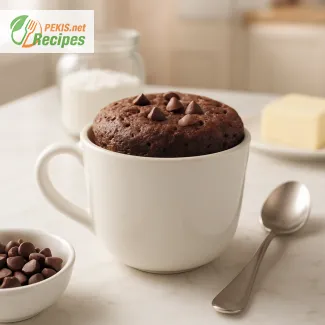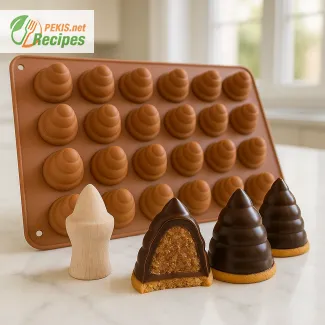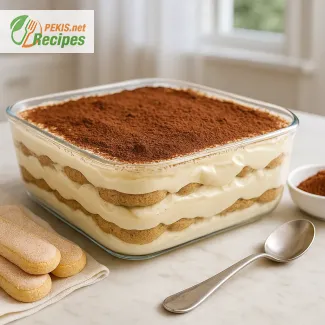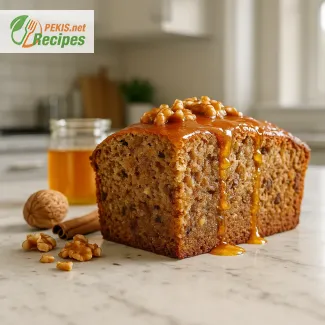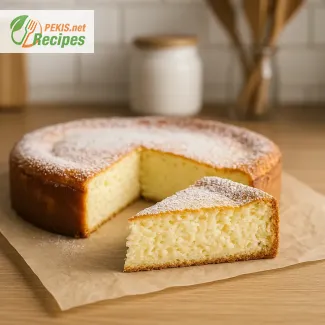
A timeless creamy dessert with a playful twist
Discover the rich tradition behind this fluffy cottage cheese treat
Few desserts carry the nostalgic charm and comforting flavor of a well-baked cottage cheese cake. With its delicate, creamy center and slightly crisp golden crust, this dessert has earned a place in many home kitchens across Europe and beyond. In this version—aptly titled Greedy Neighbors' Cottage Cheese Cake—you’ll find all the classic elements of a traditional cheesecake, but with a rustic, playful edge that captures the essence of a warm community gathering or a spontaneous afternoon visit from your favorite neighbor.
The heart of this cake lies in its simple yet luxurious cottage cheese filling—rich in texture, smooth on the palate, and naturally tangy. Unlike dense American cheesecakes, this European-style version is lighter, fluffier, and pairs beautifully with a cup of coffee or a glass of milk. What sets this recipe apart is its authentic use of full-fat cottage cheese, offering not only a distinct flavor but also a signature grainy texture that melts beautifully when baked.
This dessert evokes the memory of sun-drenched kitchens, clinking porcelain, and whispered gossip over steaming cups of tea. It’s the kind of cake that disappears slice by slice while laughter fills the air and someone always asks for the recipe. And while the name Greedy Neighbors' might make you smile, it’s also a nod to just how irresistible this dessert is. It rarely lasts long once it’s served.
A cake born from humble ingredients
The beauty of this cottage cheese cake lies in its modesty. It doesn’t rely on extravagant toppings or complicated steps. Instead, it celebrates simple, wholesome ingredients—butter, eggs, sugar, flour, and of course, cottage cheese. These everyday pantry staples come together to form a dessert that feels indulgent yet approachable, perfect for both seasoned bakers and curious beginners.
The flavor profile is subtly sweet, with notes of vanilla and lemon zest adding freshness and balance. The crust provides just enough structure and contrast to the creamy filling, creating a perfect forkful every time. And although it’s delightful on its own, this cake also welcomes a dusting of powdered sugar, a spoonful of fruit compote, or a drizzle of honey for an extra layer of indulgence.
This recipe has its roots in Central and Eastern European traditions, where quark, tvorog, or farmers’ cheese often replace standard cream cheese in baked goods. These regional cheeses bring a unique texture and flavor that’s distinctively different from the heavier cheesecakes popular in the West. In this version, high-quality cottage cheese is used to achieve that same classic balance—light, creamy, and slightly tangy.
Perfect for any occasion
Whether you're baking for a special event, preparing a treat for unexpected guests, or simply satisfying your own craving for a comforting dessert, this cottage cheese cake delivers on all fronts. It’s adaptable, elegant, and just the right amount of sweet. The cake keeps well for a couple of days in the fridge and can be enjoyed cold or gently reheated, making it a practical choice for busy households.
Its texture improves overnight, allowing the flavors to settle and meld into one harmonious bite. This makes it an excellent make-ahead dessert—ideal for dinner parties, picnics, or afternoon tea. For many, it’s also a nostalgic link to childhood, a dessert that brings back memories of baking with a grandparent or sneaking a second slice when no one was looking.
This cake isn’t just a treat—it’s a story. A story of sharing, simplicity, and joy. And while the greedy neighbors in the title might be fictional, the craving it provokes is very real. Once you bake it, you’ll understand why.
Light texture with full flavor
What truly sets this cake apart is its texture: fluffy yet structured, creamy yet sliceable. It straddles the line between a traditional cheesecake and a soft curd tart. The use of cottage cheese not only creates a lightness in every bite but also introduces a delightful, slightly grainy mouthfeel that contrasts beautifully with the smoothness of the rest of the filling.
Baking this cake is a lesson in balance. The temperature must be gentle to avoid cracking or overbaking, and the batter should be mixed just enough to preserve the airy texture. These small techniques make a big difference in the final result. Served chilled or at room temperature, each bite delivers the perfect blend of creaminess and freshness.
A light dusting of powdered sugar over the top adds visual appeal and a delicate sweetness that complements the tangy richness of the filling. Alternatively, a layer of apricot glaze or a scattering of fresh berries can transform it into a show-stopping centerpiece.
- Preheat the oven to 180°C (350°F). Grease a 24 cm (9.5-inch) round springform pan and line the bottom with parchment paper.
- In a large bowl, beat the softened butter and granulated sugar until light and creamy.
- Add the eggs one at a time, beating well after each addition.
- Mix in the vanilla extract and lemon zest.
- In a separate bowl, whisk together the flour, baking powder, and salt.
- Gradually add the dry ingredients to the wet mixture, mixing until just combined.
- Stir in the cottage cheese and milk until the batter is smooth and well incorporated.
- Pour the batter into the prepared pan and smooth the top with a spatula.
- Bake in the preheated oven for 40–45 minutes, or until the top is golden and a toothpick inserted in the center comes out clean.
- Allow the cake to cool in the pan for 10 minutes, then remove and let it cool completely on a wire rack.
- Optionally, dust with powdered sugar before serving.
Small twists that make a big difference in your cottage cheese cake
Enhance the texture, flavor, and balance with thoughtful ingredient changes
Even the most beloved traditional recipes benefit from small enhancements that elevate them from simply good to truly unforgettable. The cottage cheese cake known from our Greedy Neighbors’ version is already a tender, flavorful dessert, but with a few adjustments, it can be transformed into a signature treat tailored to your taste, dietary needs, or occasion. Understanding how each ingredient works and how small changes impact the final texture and flavor is key to mastering this classic.
Using different types of cottage cheese
The heart of this dessert lies in the cottage cheese, so naturally, the type you choose will dramatically affect the result. For a smoother, silkier texture, you can substitute regular cottage cheese with creamier varieties, such as farmer’s cheese, ricotta, or even quark. These cheeses offer a richer mouthfeel and help avoid graininess in the final cake.
If you prefer a slightly tangier note, use a cultured cottage cheese or blend in a few spoonfuls of Greek yogurt. Straining the cottage cheese before using it is another trick: it removes excess liquid, resulting in a firmer cake with more pronounced structure.
Balancing sweetness and acidity
The standard recipe uses granulated sugar, which provides neutral sweetness. To enhance flavor complexity, try replacing part of the sugar with light brown sugar or honey, which will contribute subtle caramel or floral undertones. A small splash of fresh lemon juice, in addition to the zest, brings a vibrant acidity that cuts through the richness of the cheese and butter.
For those who prefer a low-sugar dessert, erythritol or stevia blends work well in this recipe, though it's important to monitor moisture, as sugar substitutes can alter the balance.
Upgrading the crust and base
While the traditional recipe doesn't use a separate crust, adding one can provide delightful texture contrast. A base made from crushed digestive biscuits, graham crackers, or oatmeal cookies mixed with butter creates a crisp layer that offsets the creaminess of the filling.
For a gluten-free version, use certified gluten-free cookies or almond flour mixed with coconut oil and a bit of honey. This not only addresses dietary needs but adds nutty flavor depth to the cake.
Flavor infusions that elevate the experience
Simple additions can enhance the cake’s profile without compromising its traditional nature. A teaspoon of almond extract or orange blossom water offers a Mediterranean flair, while a pinch of cardamom or cinnamon gives a comforting, spiced aroma perfect for colder months.
Dried fruits such as raisins, chopped apricots, or even cranberries soaked in rum or orange juice can be folded into the batter to add little pockets of flavor. For a special touch, toasted chopped nuts—especially almonds or hazelnuts—add both flavor and crunch.
Why homemade beats store-bought
A homemade cottage cheese cake is worlds apart from any commercial version. When you prepare it yourself, you control the quality of each ingredient. No preservatives, no artificial thickeners, just honest textures and flavors. Moreover, baking at home allows for adjustments based on seasonality, preference, and available ingredients. It also creates an opportunity to connect with family and traditions, whether it's baking with children or recreating a beloved family recipe.
Homemade versions tend to be fresher, with a better balance of moisture and structure. Store-bought varieties often sacrifice texture for shelf life, whereas baking from scratch ensures a soft, cloud-like filling encased in a golden crust.
Avoiding common baking mistakes
Many things can go wrong when baking a cottage cheese cake, but most are easy to avoid. Here are some key points:
- Overmixing the batter introduces too much air, leading to cracks during baking.
- Skipping the straining step results in a watery batter and unstable structure.
- Opening the oven door too early causes sudden temperature changes, leading to collapse.
- Using low-fat ingredients may seem healthier but often leads to a dry, bland cake.
Always allow your ingredients, especially eggs and butter, to come to room temperature. This ensures better emulsification and a smoother batter. Bake at a moderate, consistent temperature and let the cake cool slowly to prevent cracks.
Healthier alternatives without sacrificing flavor
There are several substitutions you can make to improve the nutritional profile of this cake without compromising on flavor:
- Replace all-purpose flour with whole wheat pastry flour for more fiber and a nuttier taste.
- Use Greek yogurt instead of butter to reduce saturated fat while keeping the cake moist.
- Incorporate chia seeds or flaxseed meal for additional fiber and omega-3s.
- Use unrefined coconut sugar for a lower glycemic option with rich caramel tones.
These tweaks not only benefit your health but also add new flavor dimensions, making your version of the cake uniquely yours.
Serving and storing for maximum enjoyment
This cake is best served slightly chilled or at room temperature. Its flavor deepens after resting for a few hours, so baking it the day before an event often yields the best results. If serving for a gathering, consider topping it with fresh seasonal fruits, compotes, or even a light glaze made from citrus juice and powdered sugar.
Store it in an airtight container in the refrigerator for up to four days. To freeze, wrap individual slices in parchment and store in a freezer-safe bag for up to one month. Thaw in the fridge overnight for best results.
Whether you’re improving the original recipe with a refined twist or adapting it to meet dietary needs, each change brings you closer to your perfect version of cottage cheese cake—one that’s full of flavor, tradition, and personality.
Allergens:
Contains gluten, eggs, milk (dairy).
Allergen substitutions:
- To make it gluten-free: Replace all-purpose flour with a gluten-free flour blend with xanthan gum.
- For dairy-free: Use lactose-free or plant-based cottage cheese and vegan butter.
- For egg allergy: Use flaxseed egg substitute (1 tbsp ground flaxseed + 3 tbsp water per egg).
- Vitamin A: 450 µg – supports vision and immune system
- Vitamin D: 0.9 µg – supports bone health and calcium absorption
- Vitamin B12: 1.4 µg – essential for red blood cell formation
- Calcium: 180 mg – maintains bone density
- Phosphorus: 220 mg – supports energy metabolism
- Potassium: 160 mg – regulates fluid balance
- Magnesium: 30 mg – aids muscle function and nerve signaling
- Selenium: 11 µg – contributes to immune defense and antioxidant protection
- Vitamin E: 1.2 mg – protects cell membranes from oxidative stress
- Beta-carotene (from lemon zest): 200 µg – supports skin and immune function
- Lutein: 80 µg – supports eye health and vision
